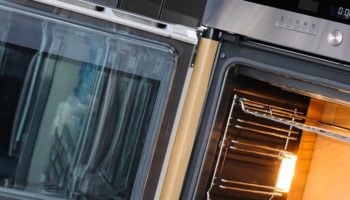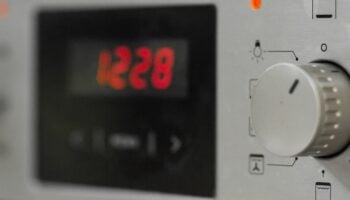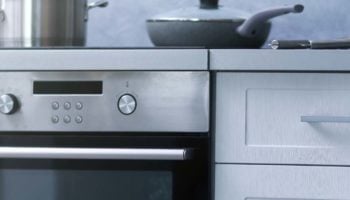If you’ve been cooking things right to the recipe, but your oven keeps burning your food, it probably isn’t your fault.
For various reasons, ovens can malfunction and go well above the temperatures we set them to. Wrong oven temperatures can be due to heating element or fan issues. The good news is that most causes are fairly easy to fix – often without professional help.
If your oven keeps burning your food, the first solution is to use an oven-safe thermometer. Test the oven’s temperature by setting it to a set point and comparing it with the thermostat after some time. Other typical fixes include testing the oven, cleaning the vents and gates, and replacing the thermostat.
Ready to keep your oven from burning your food? Let’s dive in!
Is Your Food Burnt on the Bottom?
If your oven keeps burning your food at the bottom, the heat source could be to blame. In most ovens, heat comes from the bottom area of the appliance, so if anything’s off, issues will start there.
While it’s possible that the heating element or burners in your oven are to blame, it could also be a matter of rearranging and planning ahead. Make sure that you preheat your oven and use the racks properly.
Avoid placing pans and trays at the bottom of your oven. Although placing a tray beneath your food can save you a lot of cleaning, I find that it can also interfere with heat distribution and airflow inside the oven.
Also, remember that silicone and glass cookware is always better, as metal pans tend to equate to darker foods. If you only have metal pans, line them with parchment paper first.
You can also try to move your food to a higher rack to get it away from the heat and prevent burning. Provided you’ve already tried everything I mentioned, and your oven is still burning your food, chances are the temperature sensor needs replacing.
Is Your Food Burnt on One Side?
When food is browning (or burning!) unevenly, it indicates inadequate temperature regulation throughout. If your oven has a convection fan, checking it should be your first attempt at fixing the problem. Improved airflow within the oven space can often improve the evenness of the baking, resulting in your food no longer burning on one side.
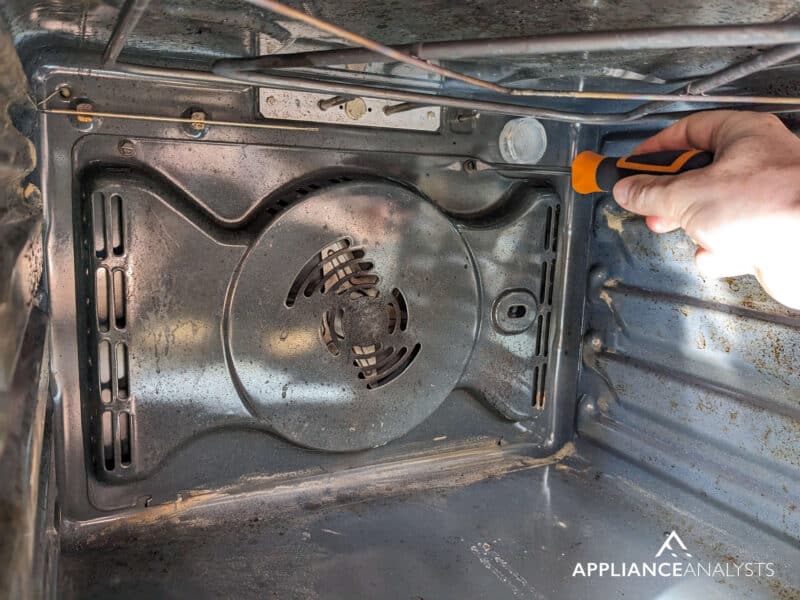
You can also try flipping your food halfway through cooking so that all sides cook evenly. However, I know flipping your food is complicated, time-consuming, and not possible with all dishes.
In my experience, your oven could also be burning your food due to clogged vents and/or grates. Check out how to clean your oven’s vents and grates below, along with other repairs to repair your oven when your food is burning.
Is Your Food Over- or Under-Cooked?
If your food is coming out of the oven overcooked, reduce the bake time, or turn up the heat. If your food is coming out of the oven undercooked, increase the time, or turn up the oven temperature.
Provided the above solutions don’t work, there may still be an issue with the oven. The oven could be getting too hot—or not hot enough. When I see such temperature variations, it’s likely because the thermostat is defective. Find out more about how to replace the part below.
Repairing an Oven That Keeps Burning Your Food
Now that you understand what your oven is doing and have tried some simple fixes to repair it, you can move forward with more complex troubleshooting and repairs. The good news is that an oven that’s burning your food can be repaired fairly easily. You just have to figure out what’s causing the burning of your food and repair it.
Step #1: Test the Oven
There’s a chance that your oven is getting too hot. To determine whether your oven is overheating, you need an oven-safe thermometer. Place the thermometer inside the oven, set your oven to 350 degrees, and wait. If, after about an hour, the thermometer doesn’t read 350 degrees, then we’ve confirmed that the oven’s not matching up to your thermostat.
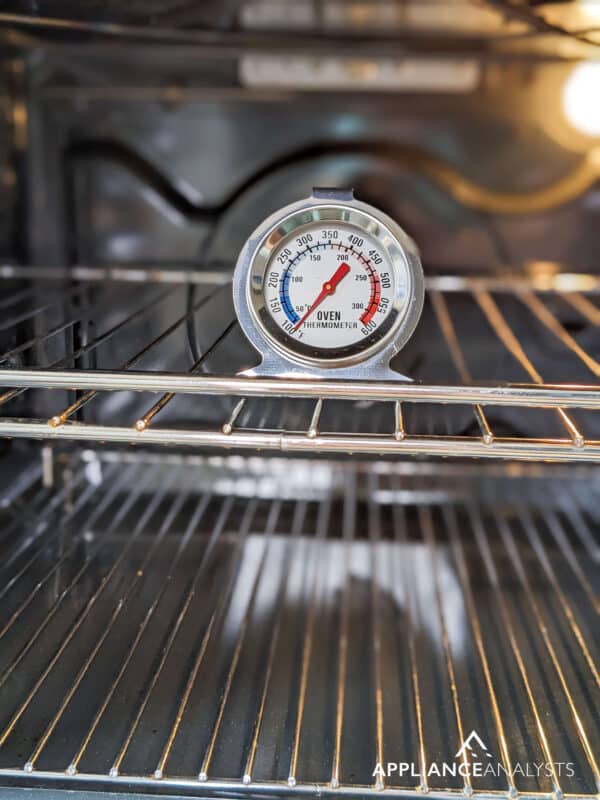
You can fix the issue through recalibration. Please read on to learn what you have to do.
Step #2: Recalibrate
Before diving into opening your oven and testing components, I recommend you try recalibrating the appliance. A poorly calibrated thermostat could explain why your oven keeps burning your food.
The recalibration process varies depending on the brand and model. I recommend finding your oven’s manual and looking for a section named “Recalibrating” or similar. If you can’t find the manual, just search “[Brand] Oven [Model #] Manual PDF” on Google (replacing the brackets with your oven’s info).
Alternatively, you can refer to our free resource below.
Step #3: Clean the Vents and Grates
Your oven relies on sufficient airflow to heat evenly and avoid hot spots. Therefore, if the vents and grates are clogged, there’s a good chance that’s why your oven keeps burning your food.
Once your oven cools down, check the vents in the door and inside the chamber. Clean the vents and grates with warm, soapy water and a sponge or soft cloth if the vents and grates appear clogged or grimy. Avoid using abrasive cleaners and pads. Keeping your oven’s grates and vents clean is a good practice that will provide many benefits.
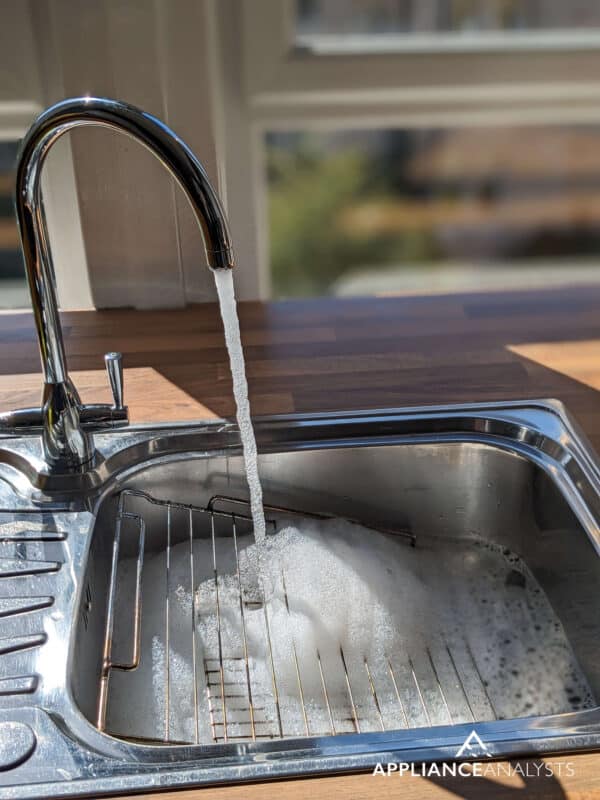
Step #4: Clean the Thermostat Controller Knob
If you have an oven that uses a knob to control the temperature instead of a panel, take the time to clean the knob thoroughly. Grease, food particles, and other debris can get stuck around the knob, which causes it to get off track.
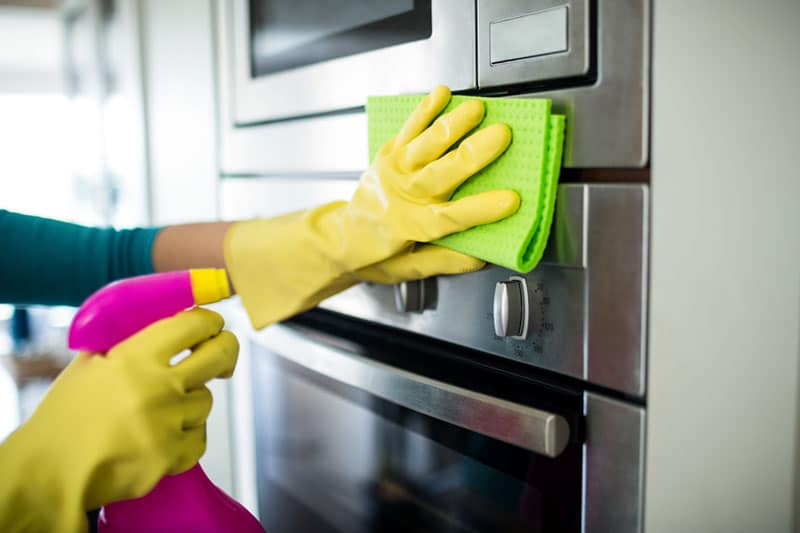
Remove the thermostat knob so you can inspect it thoroughly for any signs of damage. If the markings on the knob are unclear, remark them. Soak the thermostat knob in warm, soapy water and scrub it down. Wipe down the surface and post on the oven before replacing the knob. When you replace the knob, ensure it’s properly aligned and test to see whether the issue was resolved.
Step #5: Replace the Heating Elements
If it’s been determined that the heating element is what’s causing your oven to keep burning your food, it will likely need to be replaced. Depending on the extent of the problem, your heating, baking, and broiling elements may require replacement. The heating element will most likely be the problem if none of the other fixes have worked for you.
Before diving into replacing the heating element, you’ll need to order the spare part. You can look up your oven’s brand and model number online to find what heating element it uses, then order a new one. Since it’s just one small part, the replacement should be pretty cheap – $50 at the most.
To replace a heating element:
- Allow the oven to cool down completely, then unplug it from the wall.
- Remove all mounting screws/brackets that hold the defective element in place.
- Pull out the element, disconnecting the wire harness as you do.
- Install the new heating element by hooking up the wire harness, aligning the brackets, and fastening the screws.
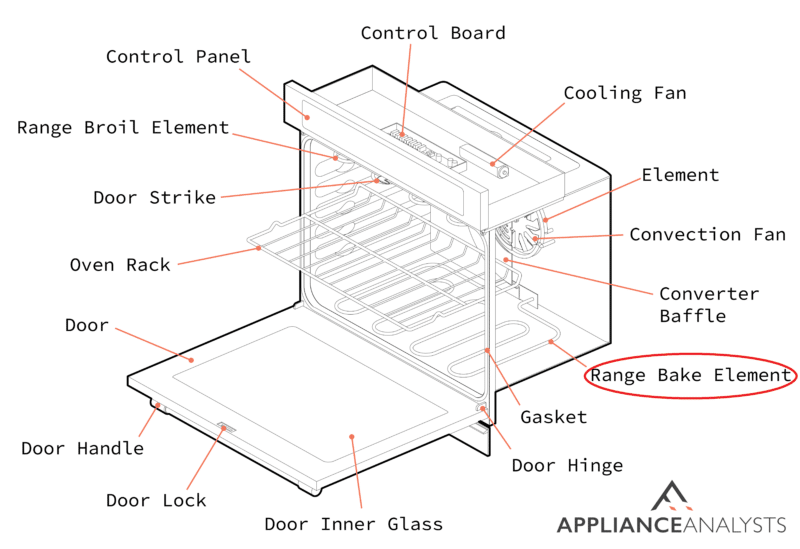
If you want to get any replacement part – or see how much one would cost – click to enter your model number in the search bar below. Our partners at AppliancePartsPros stock almost every part with free guides on how to install them.

Not everyone is comfortable replacing the heating element in their oven. If you’re unsure or uncomfortable at any point during the process, please reach out to an appliance repair technician to perform the repair for you safely and efficiently.
Step #6: Replace the Thermostat
If you have performed the steps mentioned above and are still having issues with the internal temperature of your oven, the thermostat may be defective. The thermostat is responsible for telling the oven exactly how hot it is inside the compartment and whether it has reached the temperature you’ve set.
The thermostat should only be replaced once the oven has cooled down completely.
Solution: To replace the thermostat, please follow the simple steps below:
- Use a Phillips screwdriver to undo the screws connecting the thermostat to the oven (there are typically 2).
- Gently pull the thermostat out until you see a connector. If you don’t see the connector, you’ll have to pull the entire oven out of the wall and access the part from the back.
Fixing an Oven That Keeps Burning Your Food
If none of the aforementioned steps have repaired your oven and it’s still burning your food, an internal component may need to be repaired or replaced. The task will require a professional with the knowledge, tools, and expertise to perform such a repair.
However, I hope one of the steps you performed above resolved the food-burning problem and your oven is now fixed. Remember, baking is not a perfect science.
If you run into any future problems with your oven or other household appliances, consider checking out some of our other articles and guides below and subscribing to our newsletter.
Have a wonderful week!
-Craig.







